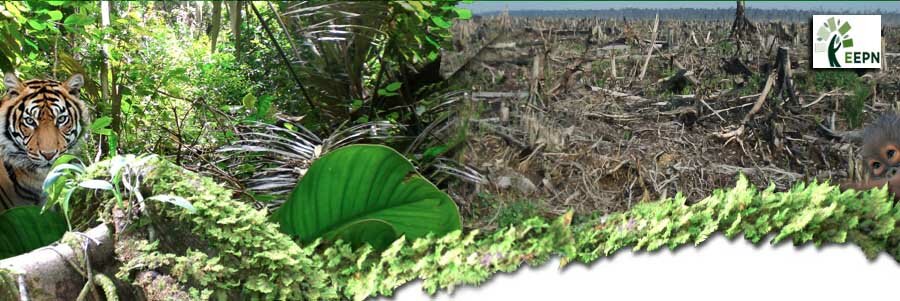Indonesia’s archipelago contains a great portion ofthe world’s plant and animal species - including 10 percent of the world’s flowering plant species, 12 percent of all mammal species, 15 percent of all reptiles and amphibian species, and 17 percent of all bird species.
This diversity includes some of the world’s most endangered species including orang-utans, Sumatran tigers, Sumatran rhinoceroses and Asian elephants, and more than 1,500 species of birds and thousands of plant species are all a part of the natural wonder of Indonesia. Scientific expeditions in parts of Indonesia regularly uncover animals never before seen.
APP produces mainly in Indonesia and China.
The bulk of APP’s pulp production in Indonesia is based in Riau and Jambi Province in central Sumatra, one of the last refuges for the critically endangered Sumatran elephant and Sumatran tiger.
- Deforestation in Riau has been driving the Sumatran tiger to extinction.;
- In 2007, Sumatran elephant and tiger populations in Riau have declined to as few as 210 and 192 individuals. If forest clearing isn’t halted, both may become locally extinct in a few years’;
- Orang-utans are unique to the forests of Sumatra and Borneo. At the end of 2002, it was estimated only 3,500 Sumatran orang-utans remained and these are in protected areas too small for their long-term survival.
Since it began operations in 1984, APP is estimated to have pulped more than 2 million hectars of natural forests in Riau and Jambi provinces in Sumatra alone.
In early 2013, after years of massive environmental and social conflicts, APP announced a new forest policy, and stopped deforestation. In April 2014, APP expanded its commitment to include the protection or restoration of a million hectares of Indonesian rainforest.
However, while APP suppliers’ own deforestation and new peatland development has stopped, deforestation by third parties continues in many of their concessions, and drained peatlands represent a further fire threaten for the remaining forests.


